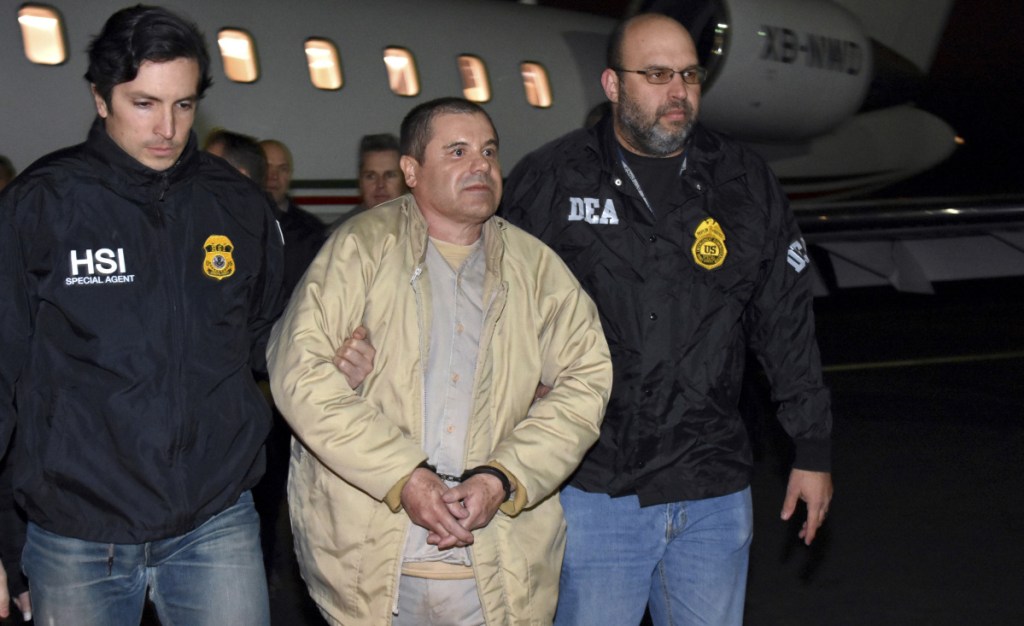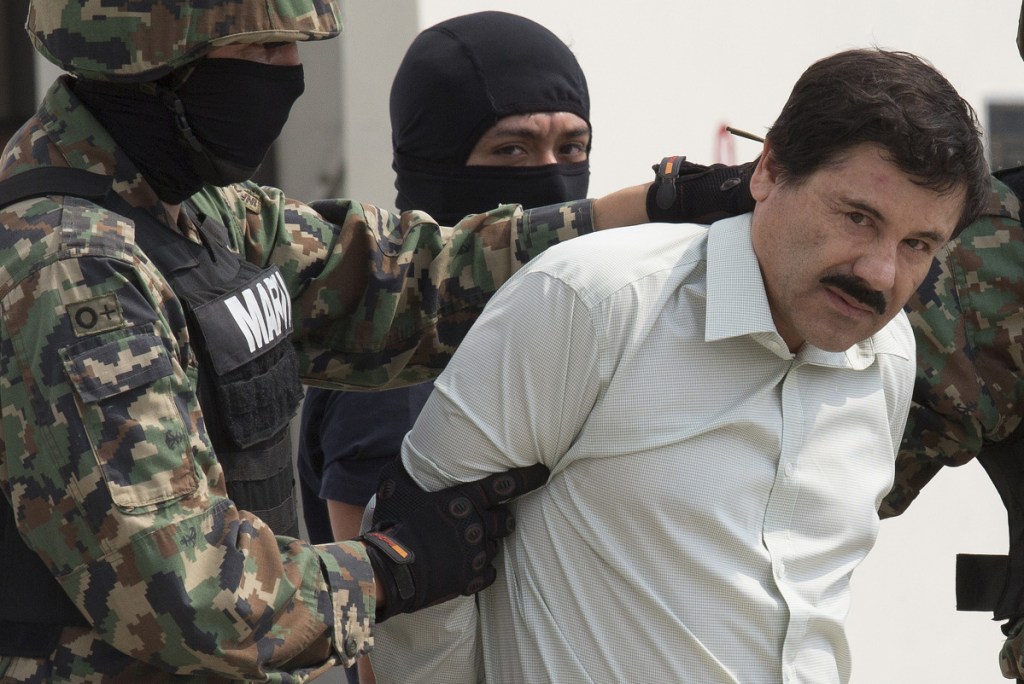NEW YORK — Two months of testimony in a federal courtroom here have offered an unprecedented glimpse into the inner workings of the Sinaloa drug cartel, complete with tales of gruesome murders, diamond-encrusted pistols, caches of cocaine smuggled in cans of peppers and, at the center of it all, a defendant who twice escaped from prison.
The trial of notorious drug lord Joaquin Archivaldo Guzman Loera – known as “El Chapo” – has shown in meticulous detail how the cartel smuggles drugs from Mexico into the United States, where it has fueled a deadly nationwide drug crisis. The flow of the cartel’s drugs, the prosecution said, relied on underground tunnels and hidden compartments in vehicles – methods that would not have been thwarted by any border wall.
MONEY AND DRUGS
The billions of dollars’ worth of heroin, cocaine, methamphetamines and marijuana came through elaborate tunnels, including one built under the U.S.-Mexico border that originated below a pool table at an estate, Guzman’s associates said. Drugs were hidden in trucks and trains, amid gallons of cooking oil and concealed in small cans of hot peppers, rolling through official entry points. Some came into the United States via container ships docking at Pacific ports. All of it was destined for sale in cities and towns across America.
One of the cartel’s stash houses, prosecutors said, had a view of the Brooklyn Bridge. Because the cartel’s drugs flowed across the United States, federal prosecutors were able to charge Guzman in several places and chose to bring him to trial in Brooklyn.
Guzman has been in custody since 2016, when Mexican security forces captured him after a deadly gun battle. The previous year, he had escaped from prison through a nearly mile-long tunnel dug under the shower in his cell.
His arrest, and the prosecution to follow, capped an astonishing saga that authorities say included a sprawling drug empire, corrupt public officials, countless assassinations and visits with celebrities while on the run.
The proceedings were filled with drama: Guzman’s mistress wept on the stand, his wife at one point coordinated outfits with him in court, and the man who managed the cartel’s computer networks betrayed his old boss in public testimony.
The Brooklyn Bridge has been closed each morning of the trial so Guzman could be ferried securely from a jail in Manhattan to the courthouse in downtown Brooklyn. The actor who plays El Chapo in the Netflix series “Narcos: Mexico” came to observe the case, and there were stories of escape, murder, gold-plated AK-47s and money laundering so elaborate and brazen they sound more like a movie plot than real life.
Prosecutors cited what they called a “mountain of evidence” in closing arguments Wednesday, the capstone to a 12-week trial that included 14 cooperating witnesses and 1 million intercepted messages between members of his cartel. The cartel’s purpose, said Assistant U.S. Attorney Andrea Goldbarg, was to distribute the largest volume of drugs possible throughout the United States and reap billions of dollars in profits.
IN CLOSING
El Chapo is accused of drug trafficking, money laundering and conspiracy to commit murder. He faces life in prison if convicted.
Goldbarg began her closing argument by describing a scene in which El Chapo stood in front of two men who lay by a bonfire, “beaten almost to death but still breathing,” she said. The men had “incensed” El Chapo for working with a rival cartel. He cursed them, shot them and then instructed his henchmen to throw their bodies into the fire.
She went on to describe how over 25 years, El Chapo rose through the ranks to lead his enormously profitable and equally brutal drug cartel.
He traveled in an armored car, built an army to fight his rivals and enemies, and wiretapped his family and close associates, including his wife and many mistresses.
But Guzman’s paranoia would help bring about his undoing, Goldbarg said. The cartel’s IT technician, Christian Rodriguez, who set up the spyware system for El Chapo to monitor his associates, eventually turned the system over to the FBI. After Guzman learned that Rodriguez was cooperating with U.S. authorities, Goldbarg said, he ordered his associates to find and kill Rodriguez, who ultimately testified in court.
“Luckily no one knew his last name and never found him,” Goldbarg said of Rodriguez. Guzman’s associates searched for him on Google and Facebook but to no avail, she told jurors.
GUZMAN’S OWN WORDS
Guzman’s own voice – which was described as nasally – often was used against him at trial. Prosecutors played recorded telephone calls between Guzman and his associates discussing drug shipments and bribery schemes.
Goldbarg told jurors that El Chapo, famous for his daring escapes, should finally be made to face his crimes.
Defense attorneys have slammed the government’s case and its cooperating witnesses, comparing them to “gutter human beings,” and argued that Guzman is instead a scapegoat. The defendant’s lawyer, Jeffrey Lichtman, told jurors Thursday that the cooperating witnesses are lying to save themselves.
“It’s the cooperators who gave this case life, who gave it breath,” Lichtman said, imploring jurors to dismiss their testimony.
Send questions/comments to the editors.




Success. Please wait for the page to reload. If the page does not reload within 5 seconds, please refresh the page.
Enter your email and password to access comments.
Hi, to comment on stories you must . This profile is in addition to your subscription and website login.
Already have a commenting profile? .
Invalid username/password.
Please check your email to confirm and complete your registration.
Only subscribers are eligible to post comments. Please subscribe or login first for digital access. Here’s why.
Use the form below to reset your password. When you've submitted your account email, we will send an email with a reset code.